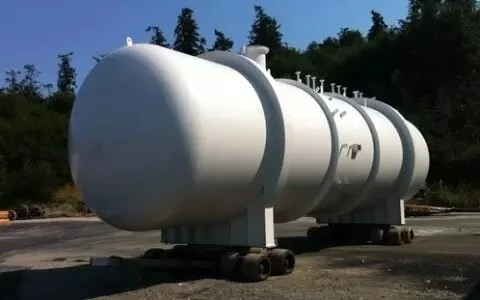Understanding Pressure Vessels: A Comprehensive Overview
A pressure vessel is a closed apparatus designed to contain gas or liquid under a specific pressure. The criteria defining pressure vessels involve a maximum working pressure equal to or greater than 0.1MPa (gauge pressure). These vessels come in fixed or mobile forms, serving as containers for liquefied gas or gas with a pressure-volume product equal to or exceeding 2.5MPa·L. Additionally, they can hold liquids with a maximum operating temperature equal to or greater than the standard boiling point.
Furthermore, a pressure vessel can take the form of a gas cylinder or an oxygen cabin. For these, the nominal working pressure should be equal to or greater than 0.2MPa (gauge pressure). Such vessels are designed to carry liquefied gas or gas with a pressure-volume product equal to or exceeding 1.0MPa·L. Alternatively, they may carry liquid with a standard boiling point equal to or below 60℃.
The significance of pressure vessels lies in their critical role across various industries. From manufacturing to energy production, these vessels are integral components facilitating the storage and transport of substances under specific pressures. However, the operation and maintenance of pressure vessels come with inherent challenges and safety considerations.
In this comprehensive overview, we delve into the diverse aspects of pressure vessels, exploring their types, applications, and the stringent regulations governing their design, operation, and maintenance. Understanding the intricacies of pressure vessels is essential for ensuring safety, reliability, and compliance within industrial settings.
Stay tuned as we navigate through the complexities of pressure vessels, shedding light on the critical considerations for their proper utilization and the measures needed to guarantee their optimal performance and longevity.

Furthermore, a pressure vessel can take the form of a gas cylinder or an oxygen cabin. For these, the nominal working pressure should be equal to or greater than 0.2MPa (gauge pressure). Such vessels are designed to carry liquefied gas or gas with a pressure-volume product equal to or exceeding 1.0MPa·L. Alternatively, they may carry liquid with a standard boiling point equal to or below 60℃.
The significance of pressure vessels lies in their critical role across various industries. From manufacturing to energy production, these vessels are integral components facilitating the storage and transport of substances under specific pressures. However, the operation and maintenance of pressure vessels come with inherent challenges and safety considerations.
In this comprehensive overview, we delve into the diverse aspects of pressure vessels, exploring their types, applications, and the stringent regulations governing their design, operation, and maintenance. Understanding the intricacies of pressure vessels is essential for ensuring safety, reliability, and compliance within industrial settings.
Stay tuned as we navigate through the complexities of pressure vessels, shedding light on the critical considerations for their proper utilization and the measures needed to guarantee their optimal performance and longevity.


